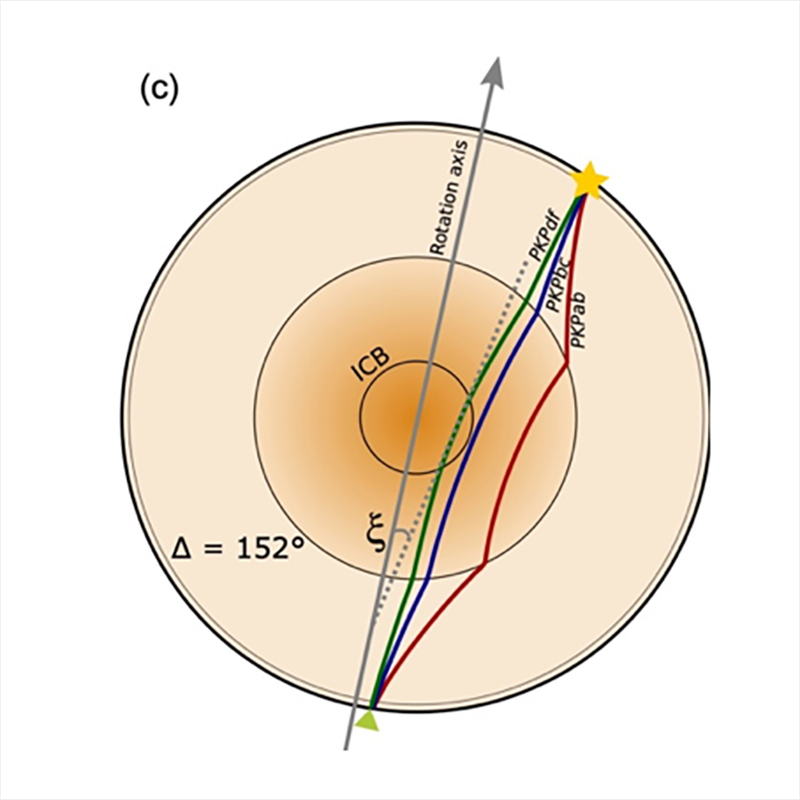Why Mars’ Magnetic Field Was Lopsided: Evidence from InSight & Surveyor
Mars once sported a global magnetic field like Earth’s, but evidence shows that field was uneven, favoring the southern hemisphere. New simulations suggest that a fully liquid core combined with a slight temperature difference between the planet’s halves created a one‑sided dynamo. This model matches data from NASA’s InSight mission and Mars Global Surveyor, and it may reshape our understanding of how Mars lost its atmosphere and its habitability over time.
Summary
- Mars today has no global magnetic field, but crustal rocks retain a southern‑hemisphere imprint.
- Data from NASA’s InSight lander show Mars’ core may be fully molten, not a solid inner core and molten outer core like Earth’s.
- The UT Austin study used supercomputer simulations to test a liquid‑core Mars model.
- Simulations with a slight northern–southern temperature contrast drove heat outflow mainly in the south.
- Heat focussed in the south powered a hemispheric dynamo, matching magnetic rock patterns.
- This implies Mars’ field was never global, raising the possibility that atmospheric loss began earlier.
- Future work will re‑examine InSight seismic data and refine interior models.
Introduction
Today, Mars lacks a planet‑wide magnetosphere. Yet, crustal rocks betray an ancient magnetic imprint, especially in the southern highlands. Recent data from NASA’s InSight lander indicate that Mars’ core contains more light elements than expected, lowering its melting point and suggesting it remains fully molten today. A new paper by Chi Yan and colleagues at the University of Texas Institute for Geophysics proposes that this liquid core drove a lopsided magnetic field early in Martian history.
The Mystery of a One‑Sided Field
Magnetic mapping from the Mars Global Surveyor mission first revealed a stark difference: the southern hemisphere retains strong magnetic signals, while the north is nearly barren. Scientists once thought massive impacts erased northern magnetism, but growing evidence points to a core‑driven cause. Studies show Mars lost its global field around 3.9 billion years ago, coinciding with the cooling of its core.
Molten Core and Hemispheric Heat Flow
Most models assumed Mars had a solid inner core like Earth’s. However, InSight’s seismic findings suggest a core rich in sulfur and oxygen, which delays solidification and could keep the entire core molten. Motivated by this, the UTIG team ran computer simulations on a supercomputer, varying core and mantle properties to see how a fully liquid core would behave.
Insights from Computer Models
The simulations imposed a slight temperature difference between hemispheres, with the northern mantle warmer than the south. Heat escaped preferentially through the cooler southern crust, creating vigorous fluid motion in the overlying core that powered a magnetic dynamo only in that half of the planet. The result closely matches the magnetic imprint we see today.
“The logic here is that with no solid inner core, it’s much easier to produce hemispheric magnetic fields,” said Chi Yan. jsg.utexas.edu
This model suggests Mars never had a true global shield; instead, its magnetic protection was always patchy.
Implications for Mars and Beyond
A planet’s magnetic field shields its atmosphere from solar wind. Mars’ uneven field may have allowed atmospheric stripping to begin long before the field disappeared entirely. This could mean climate change on early Mars was more severe and earlier than thought. Understanding this process helps us compare Mars to other bodies like Mercury and some icy moons, which also show odd magnetic features.
Future Directions
The authors recommend revisiting InSight’s seismic data for deeper insights into core composition. Improved models that explore a wider range of internal and external conditions may refine our picture of Mars’ dynamo history. Meanwhile, meteorite studies could provide further evidence of Mars’ magnetic past.
Table 1: Core Structure Comparison
| Feature | Earth | Mars (Ancient Model) |
|---|---|---|
| Inner Core State | Solid iron–nickel | Fully liquid |
| Outer Core | Molten iron | Molten iron–light elements |
| Dynamo Mechanism | Full‐sphere convective flow | Hemispheric convective flow |
| Shield Coverage | Global magnetic field | Southern hemisphere only |
Table 2: Hemispheric Magnetic Field Characteristics
| Hemisphere | Magnetic Imprint | Surface Terrain |
|---|---|---|
| Northern | Weak | Lowlands, smooth plains |
| Southern | Strong | Highlands, rugged crust |
Facts
- Mars Global Surveyor orbited Mars from 1997 to 2006, mapping its magnetic field in detail.
- InSight’s seismic measurements began in 2018, giving new clues to Mars’ interior.
- Mercury also shows a global field, but weaker and offset from its center.
- Martian meteorites on Earth carry tiny magnetic signatures that record ancient field strength.
References
- UT Austin – Molten Martian Core Could Explain Red Planet’s Magnetic Quirks
- C. Yan et al – Mars’ Hemispheric Magnetic Field From a Full‑Sphere Dynamo
- UT – When Did Mars Lose its Global Magnetic Field?
- UT – Mars Lacks a Planet‑Wide Magnetosphere, but it Does Have Pockets of Magnetism
- NASA InSight on Mars
- Mars once had a strong magnetic field, but now only traces remain
- How a Missing Inner Core May Have Split Mars’ Magnetic Field in Two
- Molten core may hold key to Mars’ uneven magnetic past
- Tag: Mars magnetic field – Jackson School of Geosciences
- YouTube – aiVioHoRs3c
- YouTube – pjFTke8E1jA
- YouTube – aOGqBt32rI






